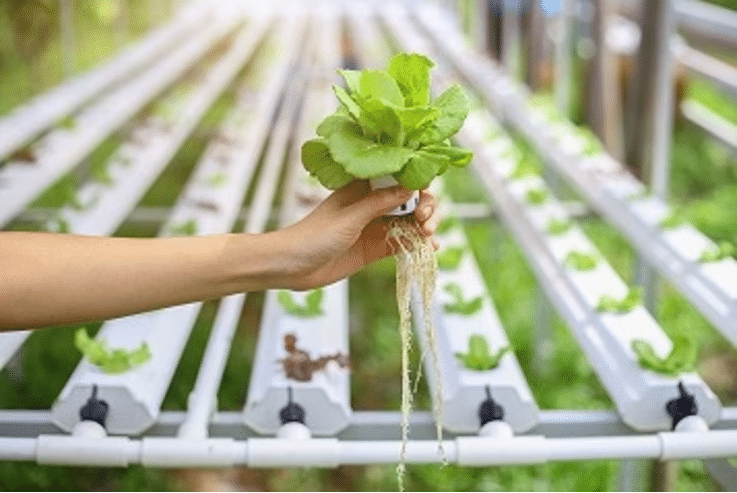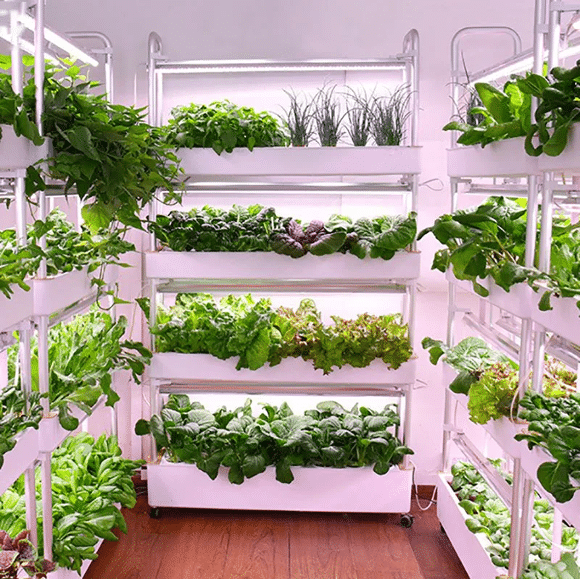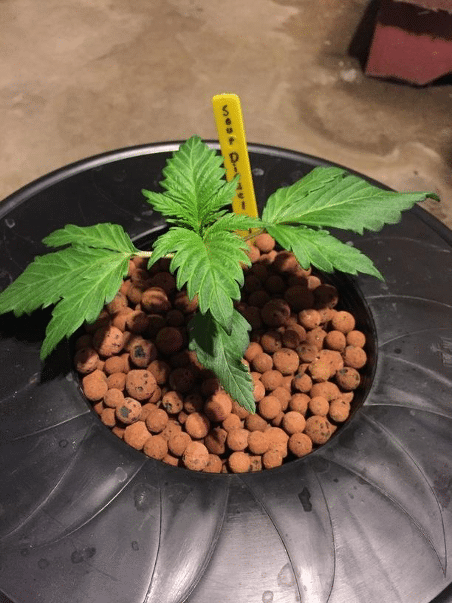Hydroponics is a method of plant growing with no soil but the right amount of water supply and other nutrients in a controlled system, which ultimately turns the crops into a successful harvest.
The word hydroponics is a combination of the Greek words ‘hudor’ (for ‘water’) and ‘ponos’ (for labor or work). Thus, it gives the literal meaning of “water-working.” This soil-less farming method is alleged to be an old creation, mentioning the hanging gardens that could have used hydroponic technology to grow plants. Interestingly, the people who introduced this hydroponic growing systems in the 16th century were not the ones who perfected it. This happened in the 19th century.
The good news is that the hydroponic grow system has gradually become the number one system for growing marijuana due to its vast array of advantages and opportunities to learn new approaches.
With the help of hydroponic indoor grow systems, gardeners can create the perfect atmosphere for their plants by having complete control over environmental elements like light, temperature, and humidity. This results in increased output quality, quicker growth, and greater profits.
Furthermore, the recycling technique is used in hydroponic systems, where the nutrient solution is reused. Thus, it is sustainable and saves a lot of money in the long run.

What Makes Hydroponics the Best Choice for Cannabis Cultivation?
Marijuana plants are known for being sensitive to their growing conditions, which require controlling factors such as light, humidity, and nutrients. Hydroponics systems stand out in this area, providing absolute control and flexibility, making it easier to create the ideal growing environment necessary for cannabis to thrive.
The cannabis hydroponic system helps in fast growth and maximum yield, which is an attractive option for commercial cannabis growers. With less requirement of the big areas and soil, cannabis can be grown in small spaces more easily, which makes growing cannabis a better option for urban areas where space is a constraint for agricultural activities. This minimizes the risk of contamination from outside sources and provides a purified and safe product.

How Do Hydroponic Systems Work?
Hydroponic cultivation techniques can be classified into several groups; however, their operating mechanisms are the same. The root of the plant is floated in the liquid solution, within which the necessary nutrients and water are mixed. Using this method of gardening, the need for soil, a host for pests and diseases, becomes irrelevant.
Regardless of the type, hydroponic growing systems work in the following way:
Delivery of Nutrients
The hydroponic nutrient solutions are specifically formulated with elements like nitrogen, phosphorus, potassium, and micronutrients for plants. These solutions are precisely created to address plant condition requirements during different growth phases of the cannabis plants.
Oxygenation
Oxygen is one of the most vital ingredients for healthy root growth and absorptive system in a hydroponic system. Tools like air pumps, air stones, or misting systems are used to oxygenate the nutrition mix to guarantee that roots receive enough oxygen.
Regulation of pH
This pH level plays an important role in both nutrient uptake and plant health. The majority of cannabis plants are adaptive to a soil’s pH level, which is slightly acidic, with a range of 5.5 to 6.5. pH levels are constantly checked and adjusted to the optimum level by using pH up or down solutions as required.
Environment Control
Growers can control temperature, humidity, and light intensity more effectively with hydroponic systems than with conventional soil growing techniques. Through crafting these elements, the growers are imitating the best conditions for the growth of the plants, allowing the plants to grow faster and generate more yields.
Frequent Inspection and Maintenance
Every hydroponic cannabis project needs routine inspections and attention. The farmers check nutrient levels, pH, and environmental conditions daily and conduct corrections accordingly to maintain good health in their plants and increase their performance.

Essential Components Required for Hydroponic Growing Systems
The heart of every hydroponic system includes:
- Reservoir: A water tank that accommodates the nutrient solution.
- Grow Tray: The area where the plants are nestled, usually above the reservoir.
- Submersible Pump: Moves the nutrient solution from the reservoir to the plants.
- Growing Medium: This inert substance supports the plant roots; examples include perlite, vermiculite, and even air for aeroponic systems.
- Nutrient Solution: A balanced blend of water and essential plant nutrients.
- Aeration System: Often used to oxygenate the nutrient solution, critical for root health.
Challenges of Cannabis Hydroponic Systems
Besides the numerous advantages of this technique, there are some challenges growers can face:
● Set-Up Cost in the Beginning
Hydroponic systems require first-time investment in equipment like reservoirs, pumps, lighting, and monitoring, which can be costly.
● Understanding of Technical Difficulties
Learning how to take care of the hydroponic growing system is a slowly increasing process for newcomers who are suggested to pay attention to the pH levels of the nutrient solution, the needed environment, and other issues of the growing.
● Risk of Nutrient Imbalances
Ensuring a good balance of nutrients in hydroponics needs constant monitoring and adjustment, as deprivation of nutrients and overfeeding plants may lead to nutrient imbalances that may affect the health of the plants.
The Bottom Line
In the end, hydroponic systems represent a revolutionary technique in cannabis cultivation that gives growers unconditional authority to influence nutrient delivery, environmental conditions, and the resultant health and productivity of the plants. Hydroponic systems do not need the constraints of traditional soil-based cultivation, allowing growers to rocket up growth rates, have higher yields, and produce better cannabis.
Despite the hurdles associated with hydroponic systems, including high initial setup costs and technical complexity, the advantages are rated higher than the disadvantages for many farmers. Through education, regular monitoring, and maintenance, hydroponic cultivation has the chance to transform cannabis production into a sustainable and more efficient method that will respond to the increasing demand for good-quality cannabis products.
Disclaimer: This material is for informational purposes only and should not be relied on for legal, medical, financial, or any other form of professional advice.
